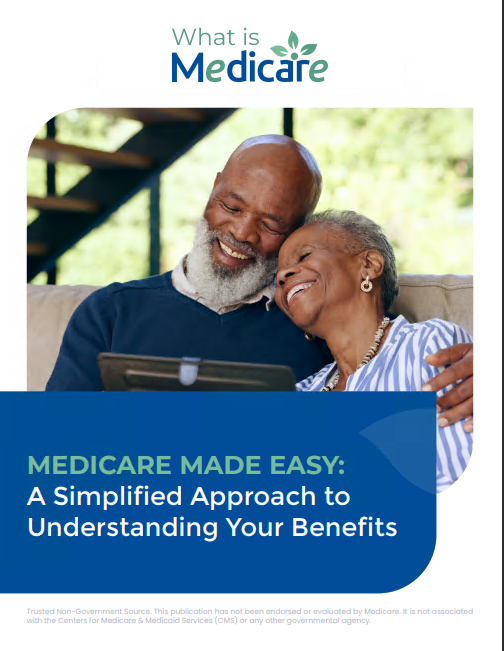Key Takeaways:
- Medicare out-of-pocket costs vary significantly depending on the type of coverage and services used, and understanding these expenses is crucial for budgeting.
- Beneficiaries should be prepared for costs beyond premiums, including deductibles, coinsurance, and copayments, which can add up throughout the year.
What Are the Real Out-of-Pocket Costs for Medicare and What Should You Expect to Pay?
When it comes to Medicare, many beneficiaries are caught off guard by the actual out-of-pocket costs. While Medicare offers valuable coverage, it does not cover everything. Understanding what expenses you’ll need to handle on your own can make a significant difference in your financial planning and healthcare decisions. Let’s explore the various out-of-pocket costs associated with Medicare and what you should expect to pay.
Breaking Down Medicare Out-of-Pocket Expenses
Medicare consists of different parts, each with its own cost-sharing structure. While many people are familiar with premiums, out-of-pocket expenses include deductibles, copayments, and coinsurance. Here’s a breakdown of the most common expenses:
Deductibles: The Upfront Cost You Need to Meet
A deductible is the amount you must pay out-of-pocket for healthcare services before Medicare starts to pay its share. Each part of Medicare has a different deductible:
- Medicare Part A: This covers hospital stays, and its deductible resets each benefit period (usually tied to a hospital stay). After meeting the deductible, Medicare covers a portion of the cost.
- Medicare Part B: This covers outpatient services like doctor visits and preventive care. The Part B deductible is an annual expense that must be met before Medicare begins to pay.
Coinsurance and Copayments: Sharing the Costs
Once you’ve met your deductible, you’re still responsible for coinsurance or copayments, which are portions of the remaining cost. Here’s how these charges break down:
- Coinsurance is typically a percentage of the cost of a service. For example, after your Part B deductible is met, you generally pay 20% of the Medicare-approved amount for most outpatient services.
- Copayments are set amounts you pay for services, such as $20 for a doctor visit. The amount can vary depending on the service and whether you have a supplemental plan that covers additional costs.
Out-of-Pocket Maximums: Is There a Limit?
One of the common concerns about out-of-pocket costs in Medicare is whether there is a cap on expenses. While original Medicare (Parts A and B) does not have an out-of-pocket maximum, Medicare Advantage Plans often do. These plans limit the amount you’ll have to pay in a given year, which can provide peace of mind for those worried about high medical costs.
Medicare Part D: Prescription Drug Costs
For those with Medicare Part D, which covers prescription drugs, out-of-pocket costs come in several forms. There is usually an annual deductible, copayments or coinsurance for medications, and potentially a coverage gap (commonly called the “donut hole”). In the coverage gap, your out-of-pocket costs may temporarily increase until you reach the catastrophic coverage phase, where costs drop significantly.
Medigap and Its Role in Reducing Out-of-Pocket Costs
For beneficiaries concerned about Medicare’s out-of-pocket costs, a Medigap policy can be a valuable addition. Medigap is a supplemental insurance policy designed to cover some of the expenses that original Medicare does not, like copayments, coinsurance, and deductibles.
There are multiple types of Medigap plans, each offering different levels of coverage, but they do not typically cover things like long-term care, vision, dental, or hearing aids. While a Medigap plan can reduce your overall costs, it does come with its own monthly premium.
Additional Costs You Might Not Expect
Long-Term Care
Medicare covers short-term stays in skilled nursing facilities or hospice care, but long-term care, such as living in a nursing home or assisted living, is generally not covered. Many seniors mistakenly believe Medicare will cover these expenses, leading to unexpected high out-of-pocket costs. Planning ahead for long-term care, through savings or separate insurance, can prevent financial strain.
Vision, Dental, and Hearing Services
Original Medicare does not cover routine vision exams, eyeglasses, dental care, or hearing aids. These services are often essential as we age, but the costs can add up quickly without additional coverage. Some Medicare Advantage Plans offer these services as part of their package, but if you have original Medicare, you may need to seek out standalone insurance for vision, dental, and hearing care.
Unexpected Medical Emergencies
Even with the best planning, medical emergencies can happen, leading to high out-of-pocket costs. Hospitalizations, surgeries, or long-term rehabilitation may incur substantial expenses, particularly if they occur multiple times throughout the year. Keeping an emergency fund specifically for healthcare can help alleviate the financial pressure.
How to Budget for Medicare Out-of-Pocket Costs
Given the complexity of Medicare’s cost-sharing structure, budgeting for out-of-pocket expenses is crucial. Here’s a strategy to help you plan:
Review Your Medicare Plan Annually
Medicare Advantage and Part D plans can change their costs and coverage from year to year. It’s essential to review your plan annually during open enrollment to make sure you’re still getting the best coverage for your needs. This is also a good time to adjust your budget for any upcoming changes in premiums, deductibles, or coinsurance amounts.
Consider a Supplemental Policy
If you anticipate high medical costs, a Medigap policy might be a wise investment. While it will increase your monthly expenses with a premium, it can protect you from high out-of-pocket costs down the line. Look carefully at what each Medigap plan covers and whether it aligns with your expected medical needs.
Plan for Annual Deductibles
Both Medicare Part A and Part B have annual deductibles. Be sure to set aside enough money at the start of the year to cover these deductibles, so you’re not caught off guard when medical bills start coming in.
Account for Coinsurance and Copayments
Once your deductibles are met, you’ll still need to pay coinsurance or copayments. Consider setting aside funds each month to cover these additional costs. For example, if you know you’ll visit the doctor regularly or need outpatient services, budget for the 20% coinsurance Part B requires.
Prepare for Prescription Drug Costs
If you’re on Medicare Part D, prescription drug costs can be unpredictable. Make sure you understand whether your medications are in the coverage gap and, if so, how much more you might need to pay before reaching catastrophic coverage.
Common Misconceptions About Medicare Costs
There are several common misconceptions that can lead to confusion or unexpected costs:
-
Medicare Covers Everything: Many people believe that once they are on Medicare, all their healthcare costs are covered. This is far from the truth, as Medicare has significant out-of-pocket costs, especially if you do not have supplemental coverage.
-
Medicare Automatically Covers Long-Term Care: As noted earlier, long-term care is not covered by Medicare. Beneficiaries often need to look into long-term care insurance or other savings strategies to pay for these services.
-
Medicare Has an Out-of-Pocket Maximum: Unlike most private insurance plans, original Medicare has no out-of-pocket maximum, meaning your costs can continue to add up if you have frequent medical needs.
Planning for Future Healthcare Needs
It’s important to consider how your healthcare needs may change as you age. The out-of-pocket costs you face at age 65 may be different from those you face at age 75 or 85. Healthcare needs typically increase with age, and with that comes higher out-of-pocket expenses. Adjust your budget accordingly, and don’t hesitate to seek help from a financial advisor or licensed insurance agent who can provide guidance on planning for future healthcare costs.
How to Stay Ahead of Rising Costs
Medicare’s out-of-pocket costs can add up quickly if you don’t plan for them. By understanding what you’re responsible for, setting aside funds for healthcare needs, and considering supplemental insurance, you can better manage your healthcare expenses over time. Regularly reviewing your plan and staying informed about changes in Medicare can help ensure that you’re not surprised by unexpected costs.
Contact Information:
Email: [email protected]
Phone: 8135553456






